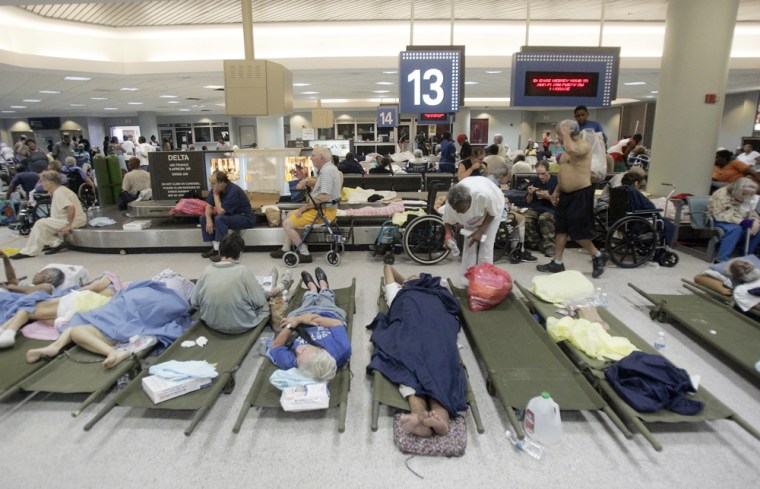They are former Border Patrol agents, beat cops, undercover drug enforcement agents, military police and prison guards turned federal air marshals, but on Friday they turned into a rapid-response law enforcement unit streaming by the hundreds into Louis Armstrong International Airport to take control of what was a rapidly deteriorating security situation.
Hurricane Katrina trapped thousands of travelers at the New Orleans airport. Thousands more rushed to the airport after the hurricane. With virtually no law enforcement presence in sight, the few federal officials and employees of the Transportation Security Administration who were on duty were quickly overwhelmed.
At the same time TSA officials in Washington were negotiating a back-of-the-envelope plan with commercial airlines to airlift Katrina victims from the airport, the agency was scrambling to find federal air marshals to guard flights and restore law and order at Louis Armstrong International.
The plan was sketched out Thursday, and by Friday hundreds of air marshals were put on airliners headed to the airport to begin the operation.
“When the air marshals arrived it was a lawless situation,” said a Department of Homeland Security source with knowledge of the operation.
Air marshals recovered more than 70 firearms at the airport, as well as knives, ammunition and other weapons.
When the air marshals hit the ground, they reached back into previous careers, using those skills to help them secure the airport, said Brian Doyle, a DHS spokesman. The air marshals secured the interior and airport perimeters, secured the FAA control tower and operated and repaired the passenger jetways, Doyle said.
Air marshals stood out on the tarmac and performed ground traffic control; some even jumped into the “tugs” that push the airplanes away from and into the gates, Doyle said.
Meanwhile other air marshals screened passengers and collected passenger manifests. With wheelchairs nowhere in sight, air marshals carried non-ambulatory patients on board the airplanes; in all the air marshals covered 157 humanitarian flights, Doyle said.
With security in place, TSA personnel, unable to screen with their X-ray machines because of a lack of power, resorted to hand searches, Doyle said.
Military units are now also present at the airport; however, hundreds of air marshals remain on duty.
But the air marshals, like other Department of Homeland Security law enforcement agencies, have for years been operating at strained staffing levels and can ill afford to redirect so many personnel from their normal duties flying shotgun on commercial air routes.
The re-tasking of the air marshals was admittedly a calculated move, said a DHS source with knowledge of the operation; however, the situation at Louis Armstrong was deemed the most critical mission. “Besides, all other high-security and high-priority flights remain covered by air marshals,” said the DHS source.
